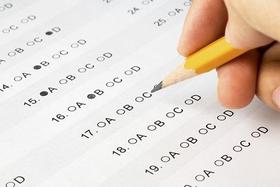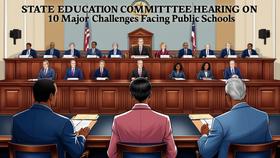Top Rankings
Clinton Comm School District ranks among the top 20% of public school district in Iowa for:
Category
Attribute
Diversity
Most diverse schools (Top 1%)
Community Size
Largest student body (number of students) (Top 1%)
Student Attention
Lowest student:teacher ratio (Top 1%)
For the 2025 school year, there are 5 public elementary schools serving 2,285 students in Clinton Comm School District. This district's average elementary testing ranking is 2/10, which is in the bottom 50% of public elementary schools in Iowa.
Public Elementary Schools in Clinton Comm School District have an average math proficiency score of 68% (versus the Iowa public elementary school average of 70%), and reading proficiency score of 62% (versus the 69% statewide average).
Minority enrollment is 32% of the student body (majority Hispanic), which is more than the Iowa public elementary school average of 29% (majority Hispanic).
Overview
This School District
This State (IA)
# Schools
6 Schools
924 Schools
# Students
3,232 Students
320,020 Students
# Teachers
262 Teachers
23,100 Teachers
Student : Teacher Ratio
12:1
12:1
Student By Grade
District Rank
Clinton Comm School District, which is ranked within the bottom 50% of all 325 school districts in Iowa (based off of combined math and reading proficiency testing data) for the 2022-2023 school year.
The school district's graduation rate of 80% has stayed relatively flat over five school years.
Overall District Rank
#294 out of 327 school districts
(Bottom 50%)
(Bottom 50%)
Math Test Scores (% Proficient)
63%
68%
Reading/Language Arts Test Scores (% Proficient)
60%
70%
Science Test Scores (% Proficient)
52%
63%
Graduation Rate
80%
90%
Students by Ethnicity:
Diversity Score
0.50
0.47
% American Indian
n/a
n/a
% Asian
n/a
3%
% Hispanic
11%
13%
% Black
9%
7%
% White
69%
71%
% Hawaiian
n/a
1%
% Two or more races
11%
5%
All Ethnic Groups
District Revenue and Spending
The revenue/student of $17,954 is higher than the state median of $16,468. The school district revenue/student has stayed relatively flat over four school years.
The school district's spending/student of $16,736 is higher than the state median of $16,042. The school district spending/student has stayed relatively flat over four school years.
Total Revenue
$58 MM
$8,262 MM
Spending
$54 MM
$8,048 MM
Revenue / Student
$17,954
$16,468
Spending / Student
$16,736
$16,042
Best Clinton Comm School District Public Elementary Schools (2025)
School
(Math and Reading Proficiency)
(Math and Reading Proficiency)
Location
Grades
Students
Rank: #11.
Whittier Elementary School
(Math: 90-94% | Reading: 85-89%)
Rank:
Rank:
10/
Top 5%10
1310 2nd Ave S
Clinton, IA 52732
(563) 243-3230
Clinton, IA 52732
(563) 243-3230
Grades: K-5
| 337 students
Rank: #22.
Eagle Heights Elementary School
(Math: 81% | Reading: 70%)
Rank:
Rank:
6/
Top 50%10
1350 Main Ave
Clinton, IA 52732
(563) 243-4288
Clinton, IA 52732
(563) 243-4288
Grades: PK-5
| 447 students
Rank: #33.
Jefferson Elementary School
(Math: 55-59% | Reading: 60-64%)
Rank:
Rank:
3/
Bottom 50%10
720 4th Ave S
Clinton, IA 52732
(563) 243-0479
Clinton, IA 52732
(563) 243-0479
Grades: PK-5
| 357 students
Rank: #44.
Bluff Elementary School
(Math: 65-69% | Reading: 45-49%)
Rank:
Rank:
2/
Bottom 50%10
1421 S Bluff Blvd
Clinton, IA 52732
(563) 242-1606
Clinton, IA 52732
(563) 242-1606
Grades: PK-5
| 391 students
Rank: #55.
Clinton Middle School
(Math: 60% | Reading: 56%)
Rank:
Rank:
2/
Bottom 50%10
1350 14th St Nw
Clinton, IA 52732
(563) 243-0466
Clinton, IA 52732
(563) 243-0466
Grades: 6-8
| 753 students
Recent Articles

The 15 Biggest Failures of the American Public Education System
The world is in a constant state of change and those who fail to adjust fall behind. Unfortunately, the American public education system has not kept up with the times and is currently facing a number of serious problems. Keep reading to learn about the biggest failures affecting the modern U.S. public education system as well as some of the trends that could spark change.

Florida Governor Calls for More Funding for State’s Public School System
Florida Governor Rick Scott has introduced a state budget for next year that pumps one billion more dollars into the public school system. We’ll look at his reasons for the increase and the responses to the proposal.

Can Your Child’s School Meet the National Standards?
The article discusses the challenges public schools face in meeting national educational standards. It examines current performance trends, identifies key issues affecting student achievement, and explores potential solutions for improving academic outcomes across U.S. public schools.





